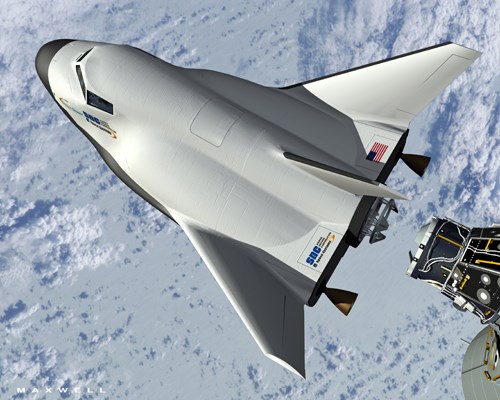Dream Chaser chases its dream outside of NASA
With Boeing and SpaceX winning the Commercial Crew Transportation Capability lottery, Sierra Nevada must find new suitors for the composites-intensive Dream Chaser.

Sierra Nevada's Dream Chaser.
After months of speculation and breath-holding, NASA finally announced last week the recipients of its Commercial Crew Transportation Capability (CCtCap) grant money, designed to fund development of space vehicles to transport U.S. astronauts to and from the International Space Station (ISS).
There were three companies, and their craft, vying for the funds: SpaceX (Crew Dragon), Boeing (CST-100) and Sierra Nevada (Dream Chaser). Only two of three would be picked to receive funding and speculation suggested that SpaceX would be a winner, with Sierra Nevada likely to take the second spot. On Sept. 16, however, we got the news that the odd man out was Sierra Nevada. Boeing was awarded $4.2 billion to further development of its CST-100 and SpaceX was given $2.6 billion for its Crew Dragon.
The question at Colorado-based Sierra Nevada is, "Now what?" Company officials have said that they would like to complete development and testing of the composites-intensive Dream Chaser, and that is probably a good idea, particularly if the company wants to attract funding from elsewhere, like Europe. But going forward will require at least some in-house investment. Employees who worked on Dream Chaser deserve a lot of credit for bringing the craft as far along as they have, and so quickly. We hope that for their sake Sierra Nevada can find new suitors soon so that Dream Chaser can, ultimately, fulfill its promise.
Related Content
-
Plant tour: Middle River Aerostructure Systems, Baltimore, Md., U.S.
The historic Martin Aircraft factory is advancing digitized automation for more sustainable production of composite aerostructures.
-
Plant tour: Joby Aviation, Marina, Calif., U.S.
As the advanced air mobility market begins to take shape, market leader Joby Aviation works to industrialize composites manufacturing for its first-generation, composites-intensive, all-electric air taxi.
-
A new era for ceramic matrix composites
CMC is expanding, with new fiber production in Europe, faster processes and higher temperature materials enabling applications for industry, hypersonics and New Space.












.jpg;maxWidth=300;quality=90)
